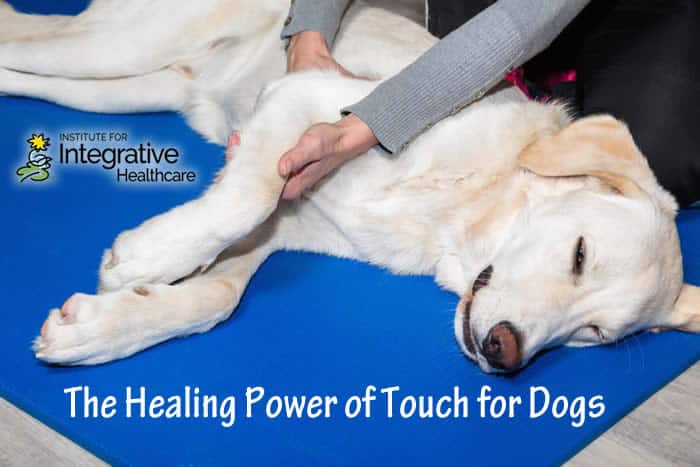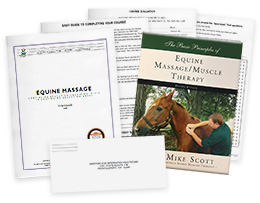

This article details the amazing rehabilitation efforts for a paraplegic French bulldog using the power of touch.
Meeting Mugsy (a well natured 4-year-old French Bulldog) for the first time was special. My wife had informed us of her wish to adopt a rescue pet after seeing an advertisement on a neighborhood networking site. We instantly knew we had to bring his warm smile into our home. We were made fully aware of a preexisting injury leaving him wheelchair bound. Despite this news, our family was ready to bring home a new addition.
Mugsy was scheduled to remain in a local rescue home for merely one week. In that week’s time, we arranged for pickup and brought him home. When we arrived at the rescue home, I still recall vividly Mugsy plowing over a group of Pomeranians to greet us with the biggest tongue-flapping smile imaginable. My son was bestowed the honor of holding him during our drive home. Mugsy remained calm the entire car ride with a gleeful smile.
The rescue home informed us there was significant spinal disc injury within his lumbar region. Apparently, the prior owners did not care for Mugsy sufficiently, allowing an unexplained back injury to deteriorate beyond what normal surgery could repair. As a result, his hind legs have become paralyzed. Also, Musgy is incontinent in both bladder and bowel functions. This news did not stop us from taking him into our home providing him a healing haven.
In many ways, caring for Mugsy is akin to caring for a toddler. He has plenty of energy and can move around our home in either his wheelchair or smooth plastic-lined bags. Mugsy wears urine collecting pads and two cloth diapers at all times to avoid soiling himself and our carpets. He is changed 2-3 times daily and loves being held and playing on the floor. Yes, just like a toddler.
The Power of Touch for Dogs
The power of touch has helped rehabilitate Mugsy to a great extent. There are physical signs of improvement witnessed. Mugsy had no sensory perception in his hind legs when we first acquired him. At this point, 15 months later, he has some sensory perception restored. Touching his hind legs will elicit a motor response to slightly kick. Tickling his paws will also create a leg jerk reaction.
Also, while changing Mugsy, we have attempted to stand him upon all four limbs. He normally could not hold himself for any length of time; now he is able to stand for a couple seconds of time. Slowly but surely, he is gaining strength in all four limbs.
A third sign of physical improvement is the speed at which he moves around our home. After 14 months of strengthening and rehabilitation, Mugsy maneuvers faster around the house. His forelegs have become quite muscular and his hindlegs are beginning to show muscle definition as well.
One surprising development was witnessed while my children and I were playing with our Nintendo Wii console. While swinging our Wii controller sticks, Mugsy quickly hurdles towards us barking loudly and jumping upon us. The Wii controller sticks certainly excite him.
The massage rehabilitation techniques and efforts employed on Mugsy are making a significant difference in Mugsy’s overall demeanor, behavior and disposition. He is a happy pet who enjoys life to the fullest. He attempts to run and remain active daily. When in our backyard grass, he is scooting his body with all his might. This encourages us knowing our efforts are paying off.
Patience Is Key
One valuable lesson learned through this process with Mugsy is to remain patient with efforts. Due to the extent of his injury, bone and intervertebral discs were injured. Realistic expectations were needed for rehabilitation efforts. We have been patient with him, encouraging Mugsy to move as much as possible.
There are three main techniques routinely employed with Mugsy while working with him. I arrange five session times with him weekly to ensure consistency in efforts.
- The first method is gentle circular rubbing upon Mugsy’s legs.
The more vigorous, fast-paced I perform this technique, the more stimulating it will be to his leg muscles. Applying this technique as high upon his hind legs as possible, I can also feel his muscle tone and notice any reflex movements present.
- The second method involves range of motion.
I ensure to move the entire leg from his hip region. Circular motions were quite small when I first began performing this technique many months ago. However, now I can create larger circles. Mugsy seems to enjoy this technique most. The facilitation of movement encourages healthy proprioceptive messages as well as free restrictions of synovial joint structures.
- The third method involves bouncing and tapping.
Rapid movements keep this technique stimulating for his muscles, bones and nerves. Tapotement can be sedative if I keep the rhythm, speed and pressure constant or can be stimulating if I alter these factors. Mugsy seems most surprised at the sensory feel of this technique.
Also important to Mugsy’s recovery is ample time to walk, run and play. Encouraging movement is very helpful to maintaining his muscle tonicity as well as gains in functional leg sensor and motor function.
The inclusion of massage techniques coupled with plenty of walking, running and playing are supporting my beloved Mugsy in rehabilitation efforts.












